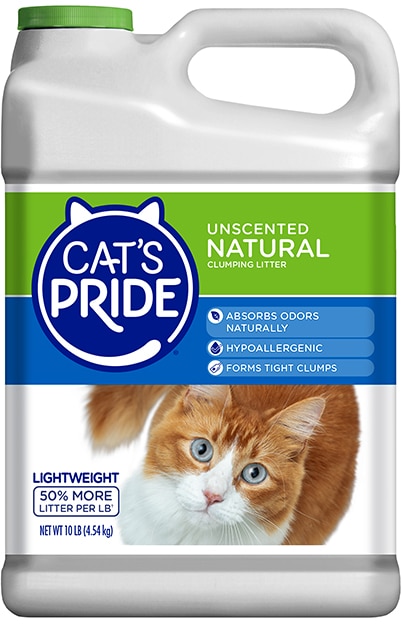Refusing to use the box. Going in the wrong spot. Spraying inside. As much as we’d all love our cats to have a healthy relationship with their cat litter box, sometimes things go wrong. But don’t despair. As with all things cat, there’s often an explanation for their behavior and, with the right support, you can usually get things back on track. Or at least back in the box.
1. Box aversion
Why won’t your cat use the cat litter box? It could be the box itself, your choice of cat litter, the location – or it could be all three. One thing’s certain: something needs to change.
Smell
Perhaps your cat litter box has an odor or scent your cat dislikes. Would your cat prefer an unscented variety? There are also certain scents that cats dislike, such as pine, cedar, citrus, eucalyptus and wintergreen, so try to avoid them. If you clean the box with harsh chemicals, it may have an offensive odor. Or, if you don’t clean it enough, the box may smell strongly of ammonia. Cats usually prefer a clean cat litter box.
Type
Or is it the texture? Your cat may prefer a finer clumping cat litter over coarser non-clumping cat litter. Or vice versa.
Size
Is your box the right size? Cats with mobility problems may have trouble getting into a box with high sides. Kittens will have similar problems, no matter how high you think they can jump. And if you have multiple cats, it’s best to give each cat its own litter box.
Location
If the cat litter box is located somewhere your cat isn’t comfortable – somewhere noisy, dark or busy – they won’t use it. They need to feel safe, somewhere they can’t be ambushed on their way in or out. So place your cat litter box in a quiet area where there isn’t a lot of traffic but still easy to access.
2. The wrong place
There could be a number of reasons why your cat is choosing to go elsewhere. They could prefer a certain surface, or something soft like carpets or clothes. Or a different location may feel safer.
If your cat is only using its box occasionally, it could also be a medical issue. If they have a urinary tract infection, it could be that they can’t make it to the box in time. And once they find a new spot, it might become habit to use it.
3. Spraying
A normal but unpleasant marking behavior of cats is spraying urine to establish territorial boundaries.
This behavior is usually associated with unneutered males and, to a lesser extent, unspayed females. But around 10% of neutered males and 5% of neutered females also spray. This is more likely in houses with over five cats, where territory is precious.
Another reason cats may spray is that they feel their territory is being threatened. Has a new cat entered the home? Or are cats outside coming close to the home? New furniture and carpet smells can cause cats to spray too.
The obvious solution if you have spraying issues is to have your cat neutered or spayed. If you’ve already done this, try and identify the cause of the spraying. Deter other cats from your property and discourage your cat from looking outside by pulling down the shades. Also, using odor neutralizers anywhere your cat has sprayed can stop him or her from doing it again.
4. Health and safety
Any of the above issues can cause concerns about health and hygiene in the home. This is intensified if someone in the home is pregnant.
Toxoplasmosis is a disease caused by a parasite found in cat feces that poses a danger to an unborn child if the mother becomes infected.
To minimize the risk of exposure to toxoplasmosis, ideally a pregnant woman should not change the cat litter box. If this can’t be avoided, she should wear gloves when doing so and wash her hands thoroughly afterward. The cat litter box should also be cleaned daily. Toxoplasmosis cysts in the cat litter box require 48 hours to become infective.
Unfortunately, the family cat is not the only way for a pregnant woman to become exposed to toxoplasmosis. Speak to your doctor for more information.



